Recognizing Fake Jorans:6 Ways
You can find fake Jordans in stores around the world. A criminal organization smuggled thousands of fake Jordans into New York and New Jersey! Five people are expected to face 20 years in prison each for trafficking fake Air Jordans.
How can you tell if Jordans are fake?
Today we have two pairs of the Air Jordan 1 and take a close look at the little details by which you can identify fake Jordans. We study the real Air Jordan shoe purchased directly from Nike and the fake shoe imported from South China. You will learn how to tell if the Jordans are real or fake.
Is the price correct?
When you store for real Nike shoes you should expect to pay real Nike prices. If you find a rare Air Jordan or a unique color for a price that is too good to be true …then it IS too good to be true. Low prices and worn boxes are your first clue that you have a fake, counterfeit or illegally smuggled in pair of Jordans.
Make Marketplace or Ebay purchases from reliable sellers. Remember that “good as new”does not mean the Jordans were original!
1. The logo
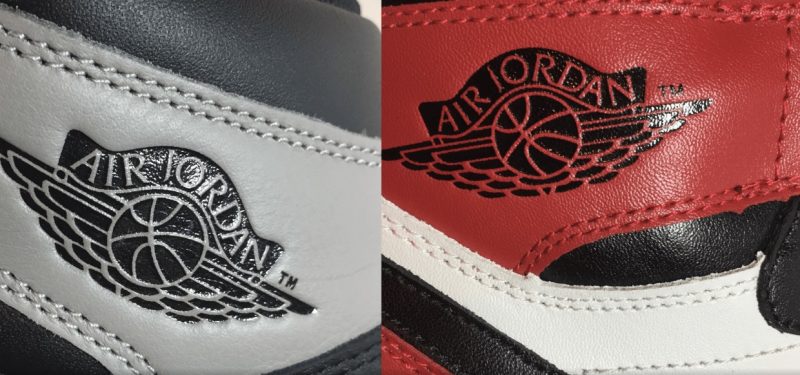
If you look at the real Air Jordan and the fake Jordans side by side, you can see that the factory making the copies recreated the logo nicely. The logo on the fake shoe is correct, but the real Jordan 1 logo is pressed a little deeper into the leather. In this case, the difference is hard to tell until you look at the pattern of the cutouts. The real Jordan sneaker has no stitching guides to help the stitchers locate the panels during assembly. The red logo panel of the fake Jordans is full of these little assembly guides. These mounting guides are not a sign of poor shoe making and are very common, just not on the real Jordans.
2. Heel stitching.
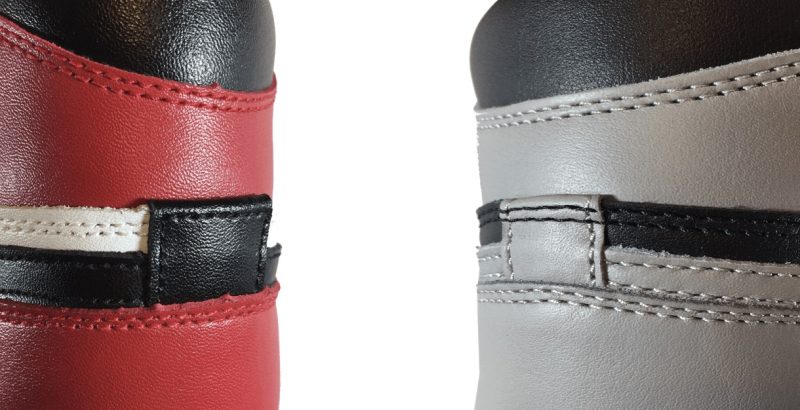
The Jordan has a small heel tab that covers the back seams of the quarter panel and the Swoosh. You can see that the back tab on the real (gray) Nike has two stitch lines as the quarter top lines cross. Also, the black thread contrasts with the gray leather. On the fake Jordan, a single stitch line crosses the tab and they used black thread on black leather. The stitching on the counterfeit matches the leather instead of contrasting with it. Again, this detail does not indicate low-quality shoemaking, it is just not how the original was made.
You can also see the centering guides on the red leather parts of the replica Jordan. On the original Jordan, no centering guides can be seen.
3. Outsole logo.
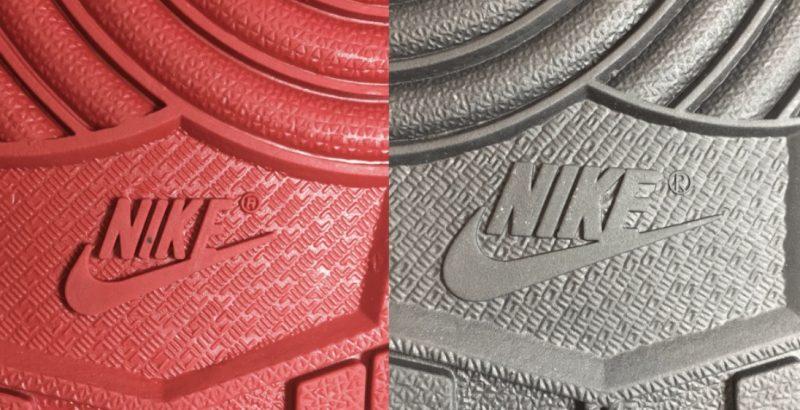
If you look closely at the Nike logo on the outsole, you will see that the imitation logo is incorrect. The width of the letters is too narrow. Another obvious mistake is that the “K”of the fake Nike logo does not touch the tail of the “Swoosh. Moreover, if you look closely at the tread patterns, you can see that the counterfeit (red) tread has shiny spaces between the tread marks where the gray one does not.
4. Check the tongue logo
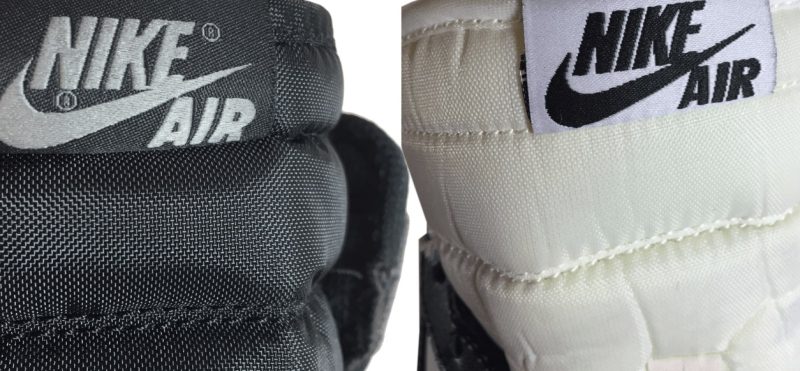
Next, look closely at the woven label attached to the top of the tongue. The fake Jordan is missing the registered brand circle “R”. I know it’s strange, but Nike likes to have the circle “R”twice on the woven label. On the back of the woven logo label (below), you can see the trademark information in English and French. The counterfeit has the wrong letter style and the label is stitched on crookedly. Crooked parts are a sure sign of poor shoemaking.
5. Check the size label
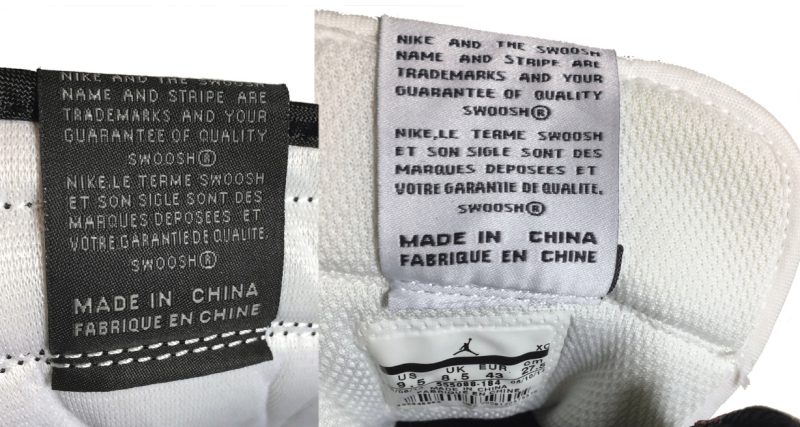
On the inside of the shoe you can see the size label with the Jordan Jumpman logo (above). On the counterfeit shoe, the label is welded to the back of the tongue. On the real Jordan, the label is sewn on the inside.
6. Check the lace holder
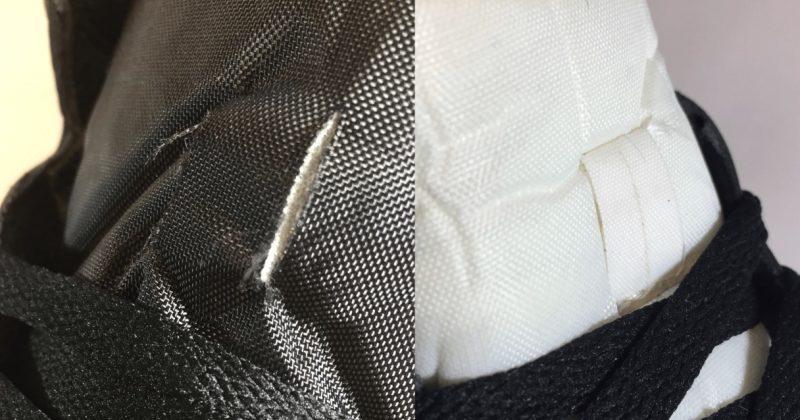
The lace holder is a minor point, but a dead giveaway when looking for fakes. The real Nike shoe has simple notches in the fabric of the tongue to serve as a lace holder. This construction seems rather low-rent for those expensive Jordans, but this is how the original was made. The fake Jordan has a small piece of fabric added as a lace holder.






